
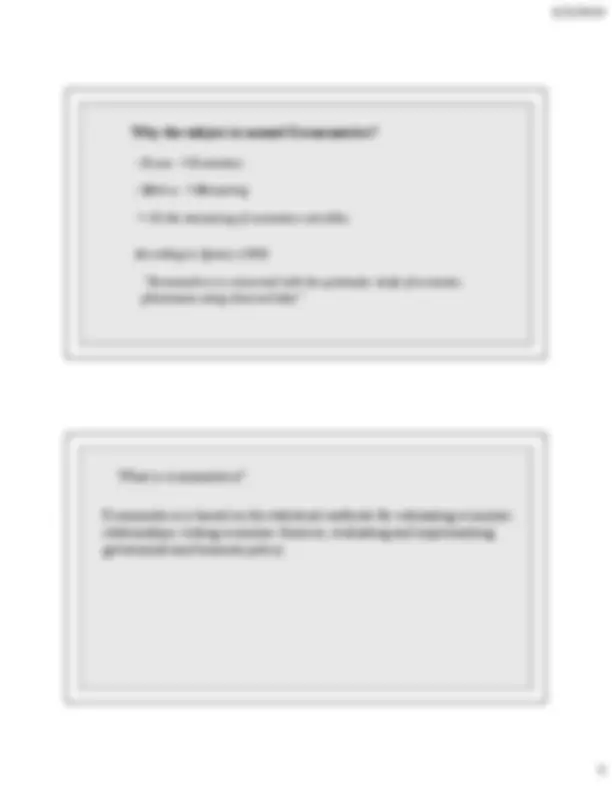
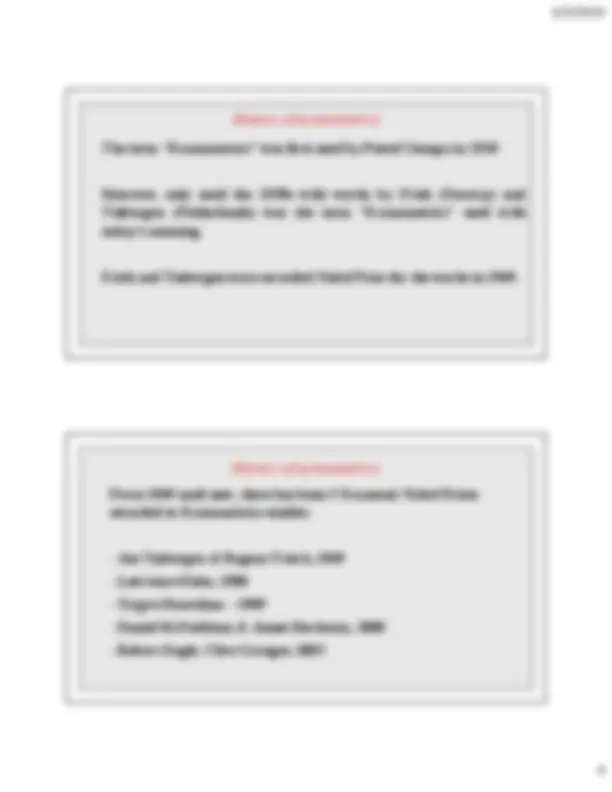
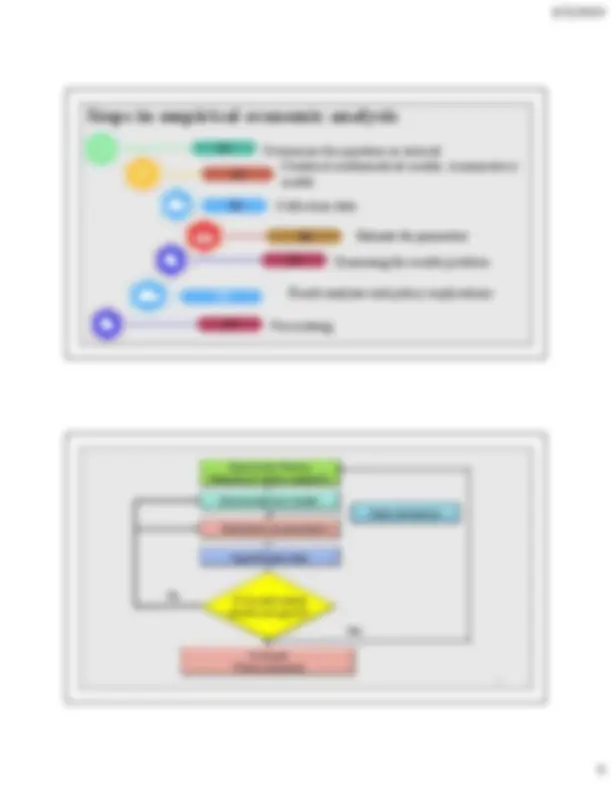
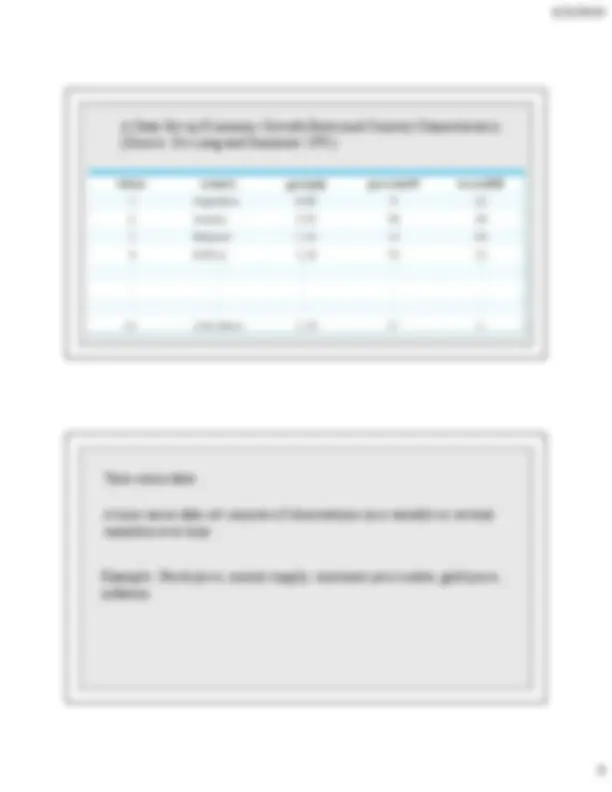
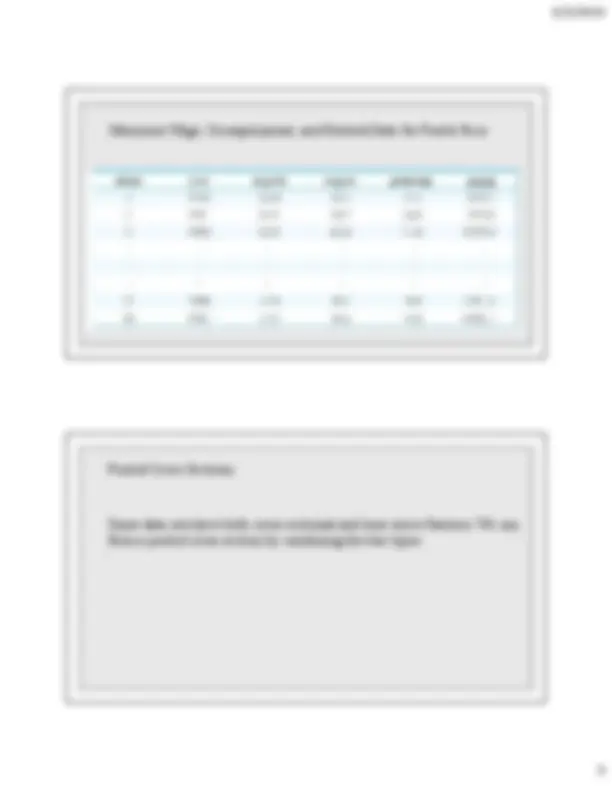
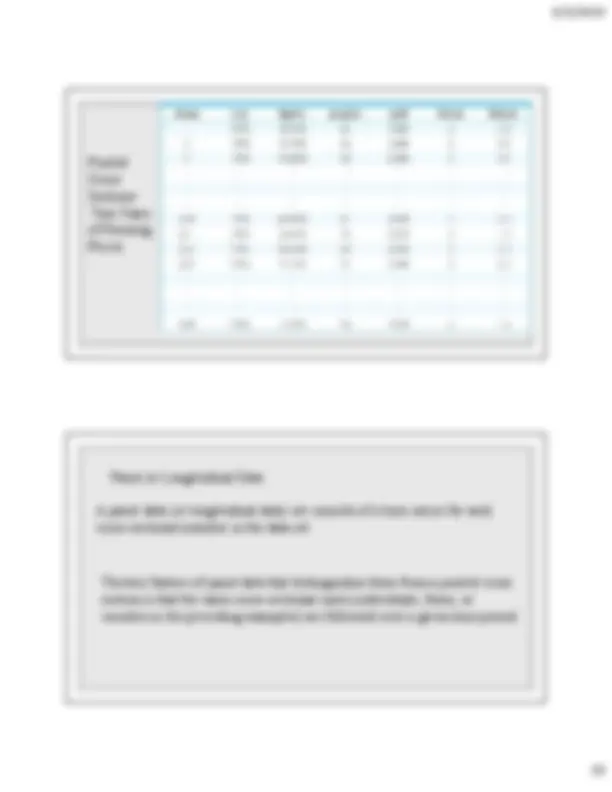


Study with the several resources on Docsity

Earn points by helping other students or get them with a premium plan


Prepare for your exams
Study with the several resources on Docsity

Earn points to download
Earn points by helping other students or get them with a premium plan
Community
Ask the community for help and clear up your study doubts
Discover the best universities in your country according to Docsity users
Free resources
Download our free guides on studying techniques, anxiety management strategies, and thesis advice from Docsity tutors
An overview of a university course titled 'introduction to econometrics'. The syllabus outlines the learning outcomes, grading structure, required assignments, and textbook for the course. The document also delves into the history and structure of econometrics data, including cross-sectional, time series, pooled cross sections, panel or longitudinal data, and primary and secondary data sources. The course aims to teach students about econometric models, statistical inference, and the use of statistical software such as stata or r in quantitative analysis.
Typology: Study notes
1 / 12

This page cannot be seen from the preview
Don't miss anything!







Lecturer: Trương Thị Thùy Dương SYLLABUS 5 Learning Outcomes: LO1: Understand the nature and role of econometric models and know the necessary steps when applying an econometric model in analysis; LO2: Understand the theoretical background of the linear regression model, the OLS method, the assumptions of the linear regression model, the properties of the OLS estimators; LO3: Understand the theoretical background of doing statistical inference and be able to test a hypothesis in econometrics; LO4: Understand and be able to practice all the steps in conducting quantitative research LO5: Have skills in using statistical software STATA or R in quantitative analysis
Overview of Required Assignments % of Final Grade Attendance 10% Assignment in group 40% End of term examination 50% Textbook: J.M.,Wooldridge, 2019, Introductory Econometrics: A Modern Approach, 5th Edition, Cengage Learning.
The term “Econometrics” was first used by Pawel Ciompa in 1910 However, only until the 1930s with works by Frish (Norway) and Tinbergen (Netherlands) was the term “Econometrics” used with today’s meaning Frish and Tinbergen were awarded Nobel Prize for the works in 1969.
From 1969 until now, there has been 5 Economic Nobel Prizes awarded to Econometrics studies:
(^01) Determine the question or interest 02 Construct mathematical model, econometrics model 03 Collection data 04 Estimate the parameters (^05) Dianosing the model problem (^07) Forecasting 06 Result analysis and policy implications 10 Economic theory Results of other research Econometrics model Hypotheses test Estimation of parameters Data collection Forecast Policy purposes If the estimated results are good? No Yes
Cross – sectional data A cross-sectional data set consists of a sample of individuals, households, firms, cities, states, countries, or a variety of other units, taken at a given point in time. Data on all units do not correspond to precisely the same time period, we would ignore any minor timing differences in collecting the data. The cross – sectional data sets on wage and other individual characteristics
A Data Set on Economic Growth Rates and Country Characteristics (Source: De Long and Summers 1991) Time series data A time series data set consists of observations on a variable or several variables over time Example: Stock price, money supply, consumer price index, gold price, inflation
Pooled Cross Sections: Two Years of Housing Prices Panel or Longitudinal Data A panel data (or longitudinal data) set consists of a time series for each cross-sectional member in the data set. The key feature of panel data that distinguishes them from a pooled cross section is that the same cross-sectional units (individuals, firms, or counties in the preceding examples) are followed over a given time period.
A Two-Year Panel Data Set on City Crime Statistics Primary and secondary data Primary data: it is not available. Data that has been generated by the researcher himself/herself, surveys, interviews, experiments, specially designed for understanding and solving the research problem at hand. Secondary Data: Using existing data generated by large government Institutions, etc. as part of organizational record keeping. The data is then extracted from more varied datafiles.